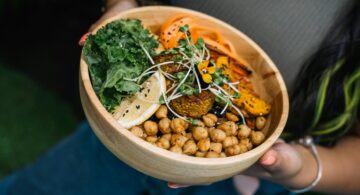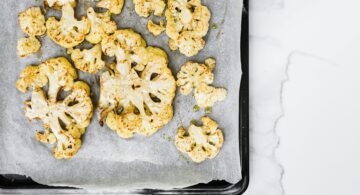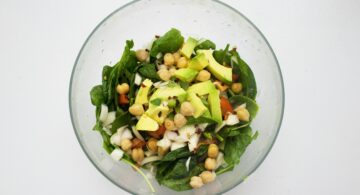The Sweetener Debate
Having been in the natural health industry for over 12 years, I have seen the rise and fall of different “healthy” sweeteners. Certain sweeteners fly of the shelves, then another takes its place as the latest fad.
There is much controversy and debate surrounding what sweeteners are safe and truly healthy. For example, one health guru may swear agave nectar is the nectar of the gods, while another says it’s a cursed food choice. It is honestly hard to sort through it the controversy over natural sweeteners and can be overwhelming for many people to choose what is a healthy alternative to white sugar.
My goal in this article is to give you a description, and my option, on the most popular sweeteners on the market today.
Not everything on the shelves of a health food store is truly healthy—especially when it comes to sweeteners. You see, white sugar isn’t the only bad guy. Alternative forms of sugar, although safer than white sugar, still affect your blood glucose levels. It’s really can be too easy to overdo it when it comes to sugars and sweeteners.The key to every sweetener is moderation. Eating a bunch of honey, for example, can do just as much damage as eating a lot of white sugar. As natural as honey is, it can still spike your blood sugar. If eaten too often, excessive amounts of honey can set you up for hypoglycemia or diabetes! The rule of thumb is take caution with anything sweet. Treating yourself once in awhile is not going to kill you. But don’t let any kind of sweet get the best of you, or your health!
The 4 Top Sugar Alternatives
Below are what I believe to be the four safest and healthiest sweeteners on the market today. Like I mentioned above, they still need to be used in moderation. However, these alternative natural sweeteners are leaps and bound above white sugar and some even offer other medicinal benefits.
4. Xylitol
This sweetener is classified as a sugar alcohol and is made from sugar cane. Although it tastes like sugar, it doesn’t affect your blood glucose levels. Believe it or not, but xylitol already exists naturally inside the human body. Our bodies make xylitol from different food sources.
Xylitol is actually medicinal, helping to prevent tooth decay. Many toothpastes and gums now include xylitol for both sweetness and cavity prevention. It can prevent ear infections as well, by inhibiting bacteria inside the ear.
This sweetener measures just like sugar when baking so it is a great alternative for those who want a sweet tasting dessert without the blood sugar spike. The only downside to xylitol is that it can cause gas, bloating, and even diarrhea if consumed in excess because it absorbs water in the colon.
3. Raw Honey
Having been consumed for centuries, honey is probably the oldest and most natural sweetener of all. In it’s raw form, honey is packed full of nutrients including amino acids, minerals, antioxidants and enzymes.
The medicinal properties in honey can prevent and treat allergies. Honey is also one of the best topical treatments for burns.
Honey in its raw form is best because heat can destroy the nutrients. I do caution the overuse of honey though, as it can raise your blood sugar. A couple teaspoons of honey a day is adequate.
2. Coconut Sugar
Coconut sugar is one of the newest sweeteners on the market. In fact, coconuts are probably the “hottest” health food trend to date. From coconut oil, to coconut butter and coconut sugar, coconut’s nutrient rich composition has skyrocketed its popularity.
- Coconut sugar is made from the sap of coconut blossoms.
- It has a lower glycemic index, so it doesn’t affect your blood sugar like honey or refined sweeteners.
- It contains anti-oxidants and nutrients.
- Coconut sugar measures 1:1 for baking. It is extremely versatile and really should be a staple in every healthy kitchen to sweeten your favorite desserts and drinks.
1. Stevia
There is one sweetener that is not only 100% safe, but it also has zero effect on your blood sugar levels. This sweetener is called stevia. Stevia is an herb that grows in nature. It is very sweet and is now popular enough that you can get it at nearly every grocery store. It too is medicinal as it can naturally reduce high blood pressure!
Stevia is my favorite choice for sweetening many food items. However if I bake, I use one of the sweeteners above, as stevia tends to have an aftertaste in baked goods. I have been an avid stevia user for close to 12 years. My favorite brand to use is Nu Naturals because I have found it to be closest to the taste of real sugar.
Artificial Sweetener Dangers
Many of you may think you are being healthy by substituting artificial sweeteners for sugar or drinking “diet” soda. Unfortunately, this isn’t a healthy trade off. Artificial sweeteners can cause health problems even worse than refined sugar! Some of those include:
Aspartame
The most common artificial sweetener, aspartame, is the most toxic of all laboratory-produced chemical sweeteners. NutraSweet is the commercial brand of the artificial sugar substitute made with aspartame.
Aspartame is an excitotoxin; it can literally ‘excite” your brain cells to death. Many neurological diseases can manifest from the amount of neuron deaths caused by aspartame.
Aspartame also has an affect on the dopamine in the brain, creating a sort of high. This causes many aspartame users to become addicted. Many people who attempt to go off aspartame can actually have withdrawal symptoms. I am a former Diet Coke addict. Thirteen years ago when my eyes were opened to what NutraSweet really was, I quit drinking it. It was difficult at first, but you can’t convince me to even take a sip now!
Sucralose
Sucralose, or Splenda, is the newest artificial sweetener on the market. It has begun to replace aspartame in many sugar-free products and is touted as safe because it is derived from sugar. However, this sweetener is far from natural. Sucralose, too, is made in a lab. For this chemical cocktail, sugar is bonded to an extra chloride molecule to product sucralose. Chloride effectively acts as a preservative in your body, killing anything alive to prevent decomposition.
There are no long-term studies on how sucralose effects on the body. The longest study done on humans lasted four days!! Recent studies have shown that sucralose can destroy up to 50% of your good intestinal flora, increase your intestinal pH, and cause weight gain. There is also evidence that it is absorbed by fat. Hundreds have also reported allergic reactions to ingesting sucralose.
The companies producing sucralose claim that it passes through the body without breaking down, which is why it has no calories or effect on insulin. However, if it never breaks down, where does it go? The water system! In a U.S. study, they found sucralose in 75% of drinking water! This percentage will only continue to rise as people keep using it. So whether you like it or not, you may be consuming traces of sucralose daily in your drinking water!
The Agave Debate
Many of you are probably wondering about agave nectar. This newly popular sweetener has swept the nation, branding itself as the best alternative to sugar. As I mentioned in the beginning, many health gurus rave about the health benefits of agave nectar. It is praised for its low glycemic index. However, agave nectar isn’t all it’s cracked up to be. And in my opinion, it is far from an actual health food.
Agave nectar, although often labeled as “raw,” cannot possibly be raw. The agave plant is treated with heat, chemicals, and enzymes to produce this nectar. There is no possible way to get raw agave nectar. Plus, it has NOT been used for centuries like many companies claim. The agave plant has been used to make tequila, but agave nectar has only been around since the early 1990s.
What makes agave unhealthy isn’t even the fact that it isn’t raw; it is the fructose content. High fructose corn syrup (HFCS), one of the most loathed sweeteners by health enthusiasts, actually contains less fructose than agave nectar!! Agave nectar contains 70% fructose, which is around 20% higher than high fructose corn syrup!
The dangers of high fructose content can wreak absolute havoc on your body. The form of fructose naturally found in fruits is consumed in much lower amounts. Plus, when eating fruit, you are getting the vitamins, minerals, antioxidants, and fiber along with it. However, when you consume agave nectar, which is 70% fructose, you are causing major imbalances in the body.
Your liver processes fructose and converts it into visceral fat, which is the fat that surrounds your internal organs. Excess visceral fat is directly connected to heart disease! The more fructose you consume (i.e. agave nectar and HFCS), the greater your chance of heart disease!
High fructose consumption also disrupts leptin, which is the hormone that tells your body it’s full. So, consuming agave nectar will actually make you hungrier! And that isn’t all! A diet high in fructose has been connected to:- Cancer
- Inflammation
- Auto-immune diseases
- Memory Loss
- Digestive issues
My opinion about agave nectar is pretty clear. Agave nectar, although praised for its low glycemic index, is not a true health food. My recommendation is to stay far, far away from agave nectar.
Naturally Sweetened Desserts
Life doesn’t have to be bland. Food doesn’t have to be bland. You can still indulge in some amazingly sweet and delicious desserts using my top 4 healthy sweeteners.
Below are two recipes that won’t leave you feeling deprived. They are also low glycemic, so they won’t spike your blood sugar like typical desserts. You really can have dessert that is sweet and delicious without wrecking your health!
Chocolate Caramel S’mores Bars*
Ingredients for the base:- 17.5 oz. chocolate chips
- 6 eggs, separated
- 9 oz. coconut oil
- 1 tsp. vanilla
- 1oz stevia
Ingredients for the caramel:
- ½ cup coconut oil
- ½ cup honey
- 1 cup coconut milk
- ½ tbsp. gelatin
Ingredients for the marshmallow:
- 1 cup water
- 3 tbsp. gelatin
- 1 cup honey
- 1 tsp. vanilla
- ¼ tsp. salt
Directions for the base:
- Preheat oven to 350°F.
- Grease a 7” x 11” baking tin then line it with 2 rectangular pieces of greaseproof paper. This is so you can lift the bars out of the tin when it has cooked, so overlap the pieces and leave half an inch at either side, which will be your ‘handles’.
- Chop chocolate into the top of a double boiler and add the coconut oil.
- Place over simmering water and melt. Add the vanilla and remove from the heat, then quickly stir the egg yolks into the chocolate.
- Beat egg whites in a bowl until stiff but not dry.
- Beat in the stevia a little at a time until stiff peaks form.
- Stir 2-3 tbsp. of meringue into the chocolate then gradually fold the chocolate into the meringue.
- Turn into the baking tin and bake for 30 minutes.
- Remove from the oven and let stand until cooled.
Directions for the caramel:
- Dissolve the gelatin in a little very hot water.
- Place the oil and honey in a saucepan and bring to the boil.
- Boil until it reaches the soft ball stage. (Drop a little into a glass of cold water and see if it forms a ball of set caramel).
- Remove immediately from the heat.
- Add the cream slowly so it doesn’t splatter.
- Beat until the caramel is smooth.
- Add the dissolved gelatin and beat again to incorporate it.
- Place in the fridge to cool then pour over the base.
- Place in the fridge to set.
Directions for the marshmallow:
- Place the gelatin with 1/2 cup of the water (heated) in a bowl and stir to dissolve.
- Pour the other ½ cup of water into a saucepan with the other ingredients.
- Bring the mixture to the boil and continue to boil until it reaches 240°F.
- Remove from the heat.
- Using eggbeaters or a stand mixer, pour the boiled mixture into the bowl containing the gelatin and beat the mixture until it becomes thick (this takes a while).
- Turn off the mixer and pour or spoon the marshmallow onto the set caramel.
- Smooth out the top and set in the fridge.
- Once set, cut into squares with a sharp knife, which has been dipped in boiling water. Re-dip it often so the marshmallow doesn’t stick.
Healthy “Almond Joy” Bars
All natural almond joys**? Yes please! Now you can even have a healthier version of one of the most beloved candy bars!
Ingredients for the chocolate base:- 1/2 cup coconut oil
- 1/2 cup almond butter
- 1/4 cup xylitol or substitute 4-6 scoops stevia extract
- 6 tbsp. cocoa powder
- 3 tbsp. sweetener xylitol
- 1 tsp. vanilla
Ingredients for the coconut topping:
- 1 2/3 cup unsweetened coconut flakes
- 7 tbsp. coconut oil
- 1/3 cup xylitol or 2-3 scoops stevia extract powder (Nu Naturals)
- 1 1/2 tsp. vanilla
- 1/4 tsp. additional flavoring (optional – almond or coconut are good choices)
- 2 tsp. arrowroot powder (cornstarch may be substituted)
- Almonds halves or slices (optional)
Directions for chocolate base:
- Melt oil and nut/seed butter over low heat.
- Stir in cocoa and granulated sweetener and combine thoroughly.
- Mix in remaining ingredients except for vanilla. Continuously stir until it slightly thickens, then remove from heat.
- Stir in the vanilla.
- Pour the mixture into an 8×8 pan and place in freezer to harden while you make the topping. If you don’t have room in your freezer, the fridge will get it solid enough to work with.
Directions for coconut topping:
- Melt oil in small pan and add coconut flakes. Stir.
- Add remaining ingredients. Simmer and stir until it thickens a bit.
- Once the chocolate is hardened, gently smooth the coconut mixture on top.
- Place slivered or whole almonds on top. Place bars back in the freezer until hardened. Again, the fridge will work, but it will take longer.
- Slice into squares of desired size and enjoy! They’ll probably be too hard to cut right out of the freezer so you may need to let them thaw a bit first.
- Store in the refrigerator.
Swap out your white sugar and stock your pantry with these 4 healthy sweeteners. Sweets don’t have to be the bad guy any longer! Safe sweeteners will keep your taste buds satisfied without the guilt or the negative health effects. Once you notice how well you feel, you won’t want to go back. Don’t wait, do the swap today!
Do you give yourself wellbeing by avoiding sugar? How does this make you happy?
More Articles You Might Enjoy:
* Recipe from www.foodrenegade.com
**Recipe from www.wholenewmom.com





























